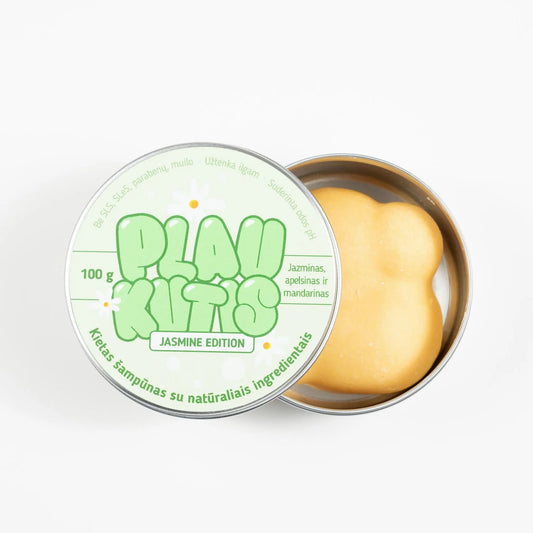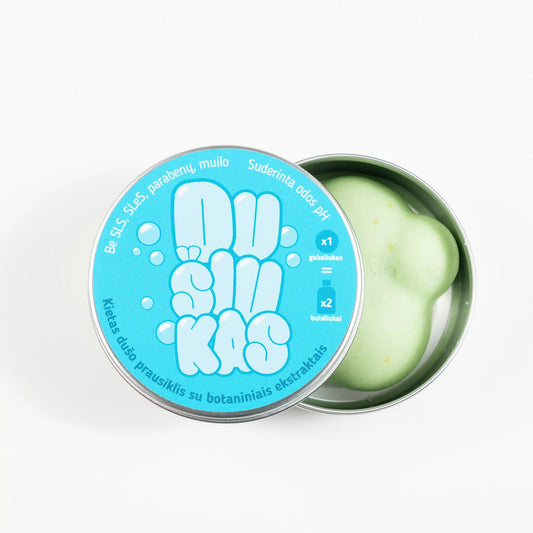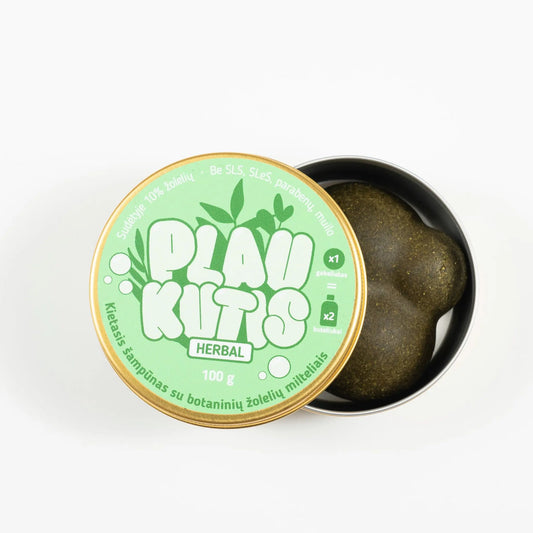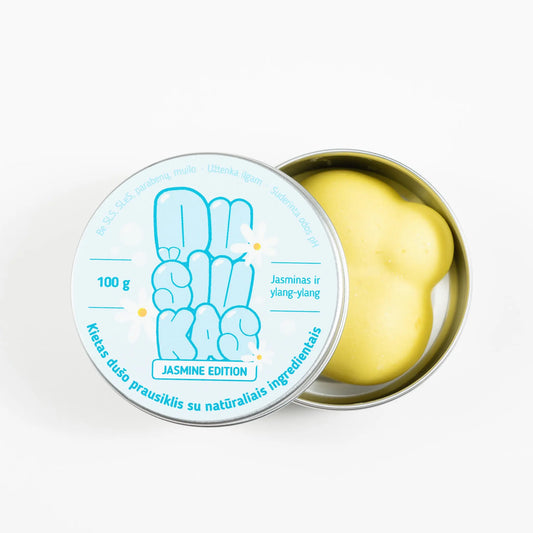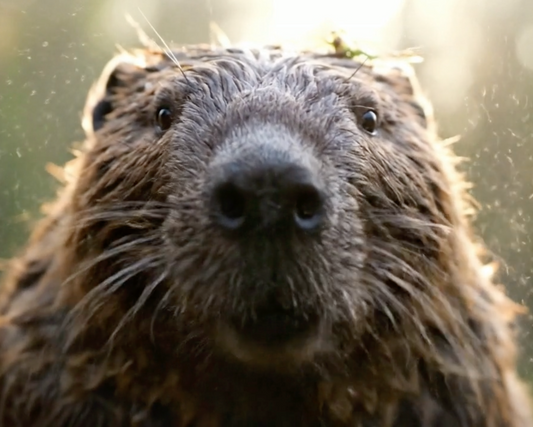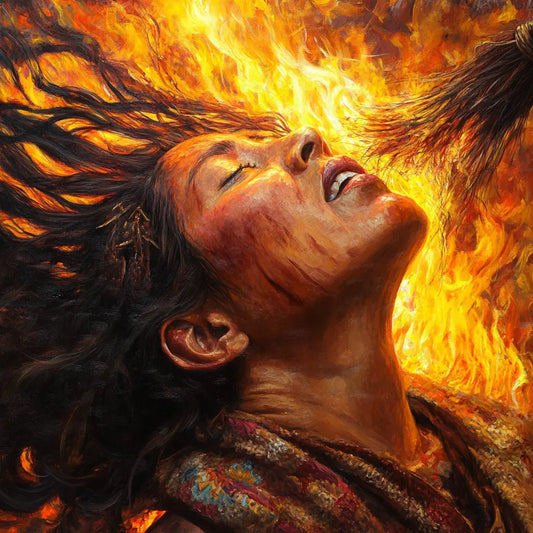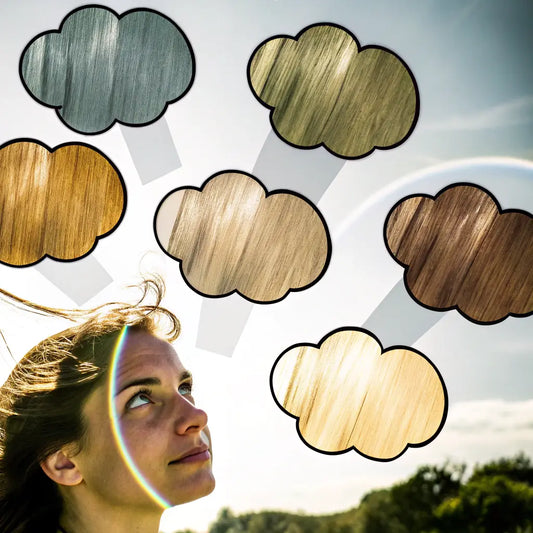Did you know that your hair type is determined before you are born? The shape of your hair follicles, which is determined by genetics, determines whether your hair will be straight, wavy, curly or coily. Interestingly, less than 12% of the world's population has naturally straight hair. Understanding your hair type is crucial to maintaining healthy hair. This will help you choose the right products and treatments that will nourish and enhance your natural hair.
In this article, we’ll delve into the science of hair types and reveal a number of interesting facts, studies, and figures that may change the way you think about your hair. Whether your hair is straight, wavy, curly, or coily, each type has its own unique challenges and needs. With practical tips and myth busting, you’ll learn how to properly care for your hair.

Four main hair types
Hair is divided into four main categories: straight, wavy, curly, and coily. This classification is based on the shape and texture of the hair, which affects how it behaves and reacts to various tools and environmental conditions. Let's take a look at each hair type and discover some lesser-known facts and figures.
Straight hair (type 1)
Straight hair is known for its smoothness and soft texture. The strands of hair are uniform and do not have natural curls or waves. Due to its structure, natural oils from the scalp can easily flow down the hair shaft. This gives straight hair a shine and healthy appearance. However, this easy distribution of oils can also lead to rapid oiliness. Only about 40% of people in the world have straight hair.

Characteristics of straight hair :
- Smooth texture : Hair lies flat against the scalp.
- Shiny appearance : The smooth surface of the hair reflects light well.
- Oil distribution : Hair becomes oily faster than other hair types.
Fun fact: The scalps of people with straight hair produce 30% more sebum than those with curly or wavy hair. This is why straight hair tends to get oily faster because sebum (the natural oil from the scalp) moves more easily down the hair shaft.
Research: A 2015 study published in the International Journal of Cosmetic Science found that straight hair reflects light better, making it appear shinier than curly hair. For this reason, straight hair is often associated with a “healthy” or “smooth” appearance, even though it can be greasy.

Most common challenges :
- Oil build-up : Can make hair greasy and lifeless.
- Lack of volume : Hair may appear flat, especially at the roots.
- Slippery texture : It is difficult to maintain curls or hairstyles.
Popular hairstyles and care tips :
- Layered cuts : Gives hair dimension and movement.
- Straight cuts : Emphasizes smoothness, gives an elegant look.
Care tips for straight hair :
- Use a gentle daily shampoo.
- Avoid heavy conditioners that can weigh down your hair.
- Choose products that add volume.
- Use dry shampoo between washes to control oiliness.

Wavy hair (type 2)
Wavy hair is a cross between straight and curly hair. It forms soft S-shaped waves that can vary in intensity. Wavy hair is versatile, but it can be unpredictable.

Characteristics of wavy hair :
- S-shaped waves : Natural waves that can be loose or tight.
- Texture variety : Can be fine or coarse.
- Balanced oil level : Neither too oily nor too dry.
Characteristics: Wavy hair, or type 2, has S-shaped waves that fall between straight and curly hair. About 45% of people have wavy hair, making it the second most common hair type.
Fun fact: Wavy hair is less porous than curly or coily hair, so it absorbs and retains moisture better. However, it is prone to frizz, especially in humid conditions.
Research: According to a Pantene study , people with wavy hair are more likely to experience frizz than those with straight hair. As many as 65% of wavy hair owners experience frizz regularly.

Most common challenges :
- Hairiness : Tends to become matted, especially in humid weather.
- Inconsistency : Waves may be more pronounced in some places than in others.
- Heavier products can flatten waves .
Hairstyle recommendations :
- Beach Waves : Accentuate natural texture using sea salt spray.
- Layered haircuts : Highlights waves and reduces volume.
Care routines for wavy hair :
- Use sulfate-free shampoos to avoid dryness.
- Use light conditioners.
- Avoid over-combing your hair to preserve the shape of the waves.
- Use a diffuser when drying your hair to enhance the waves.

Curly hair (type 3)
Curly hair is characterized by well-defined spiral curls. They have a lot of volume and can range from loose loops to tight spirals. The curls create gaps in the hair shaft, making it difficult for natural oils to reach the ends.

Characteristics of curly hair :
- Clear curls : Spiral curls that have bounce and volume.
- Texture : Can be fine or coarse, but is often coarser.
- Dryness : Due to the structure of curls, they tend to be dry.
Characteristics: Curly hair, or type 3, forms defined, bouncy curls. About 15% of the world's population has curly hair. Each strand curls into a spiral, giving the hair lots of volume and texture.
Fun fact: Curly hair has 30% more surface area than straight hair, making it more prone to dryness because it has a harder time for the scalp's natural oils to reach the ends of the hair.
Research: A 2018 study published in the Journal of Dermatological Science found that curly hair has a different protein structure than straight hair. This difference makes curly hair more brittle and prone to breakage, especially when it's dry.

Most common challenges :
- Frizz : High tendency to frizz without adequate moisture.
- Combing : Curls tangle easily, so combing is necessary.
- Contraction : Hair appears shorter because the curls contract.
The best care for curly hair :
- Use moisturizing shampoos and conditioners.
- Apply a leave-in conditioner to lock in moisture.
- Use your fingers or a wide-toothed comb to comb through.
- Let your hair dry naturally or use a diffuser to reduce frizz.
- Avoid heat tools to prevent damage.

Spiral hair (type 4)
Spiral hair, also known as "kinky," has tight curls or spirals. It is the most fragile hair type due to the twisting and kinking of the strands. Spiral hair can shrink to as much as 75% of its original length.

Features of spiral hair :
- Dense spirals : The curls are densely packed and form tight patterns.
- Brittleness : The hair is soft and breaks easily.
- Dryness : Very prone to dryness because oils have difficulty traveling through the hair roots.
Characteristics: Spiral hair, also known as type 4, consists of dense curls or spiral strands and is the most fragile of all hair types. Only about 10% of the world's population has spiral hair, making it the rarest hair type.
Fun fact: Spiral hair can shrink up to 75% of its length when dry. This phenomenon, called "shrinkage," is unique to this hair type.
Research: A 2020 report published by the American Academy of Dermatology states that curly hair has fewer cuticle layers (the outer layer of the hair) compared to straight hair. This reduced cuticle layer makes curly hair more vulnerable to environmental factors, heat, and chemicals.

Most common challenges :
- Shrinkage : Hair shrinks significantly when it dries.
- Breakage : Strands are prone to breakage.
- Scalp sensitivity : You may have a sensitive scalp that requires gentle care.
Hair care and protective hairstyle tips :
- Use deep conditioning regularly.
- Try protective hairstyles like braids or twists to reduce manipulation.
- Avoid tight hairstyles that stretch the scalp.
- Use butters and oils, such as shea butter or coconut oil, to provide extra moisture.
- Sleep on a satin pillowcase to reduce friction and breakage.

What determines hair type?
There are several factors that determine your hair type, and it's not just genetics. Let's take a look at the main elements that determine whether your hair will be straight, wavy, curly, or coily.
Hair follicle shape
Hair texture is determined by the shape of your hair follicle. Round follicles create straight hair, while more oval or elongated follicles create curly or spiral hair.
Fun fact: Research shows that the curvature of the hair follicle also affects hair thickness. Curly and coily hair tends to have a thinner diameter than straight or wavy hair, making it more fragile.
How follicle shape affects hair texture :
- Round follicles : Produce straight hair because the hair shaft grows evenly.
- Oval follicles : Create wavy hair due to slight asymmetry.
- Elliptical follicles : Create curly or spiral hair because the hair grows in a spiral.
Comparison of follicle shapes :
- Straight hair : Round, symmetrical follicles.
- Wavy hair : Slightly oval follicles that produce soft waves.
- Curly hair : More oval-shaped follicles that form spirals.
- Spiral hair : Flat or elliptical follicles that produce tight spirals.
Genetic inheritance
Your hair type is mostly inherited from your parents. A study published in Nature Communications found that several groups of genes, including the TCHH gene , influence hair shaft formation.

Interesting numbers:
- If both parents have curly hair, there is a 75% chance that the child will also have curly hair.
- If one parent has straight hair and the other has curly hair, the child has a 50/50 chance of inheriting one of these hair types.
The role of genetics :
- Transmission of hereditary traits : Hair texture, color, and density are passed down genetically.
- Dominant and recessive genes : Some hair traits are dominant and have a stronger effect on the outcome.
Inheritance of hair traits :
- Parental influence : If one parent has curly hair and the other has straight hair, you may have wavy hair.
- Hybrid hair types : People of mixed genetic origin may have unique combinations, such as spiral hair with loose curls.
Effects of hormones
Hormones also affect hair type. Hormonal changes during puberty, pregnancy, or menopause can cause hair to become curly or straight.
Interesting research: A 2021 study published in the Journal of Clinical Endocrinology found that increased estrogen levels during pregnancy can cause temporary thickening or straightening of hair. After pregnancy, hair may return to its original texture.
Influence of hormonal changes :
- Puberty : An increase in hormones can make your hair oilier or change its texture.
- Pregnancy : Many women experience thicker and fuller hair due to increased estrogen levels.
- Menopause : As hormone levels decrease, hair can become thinner.
Why hair types can change over time :
- Hormone receptors : Hair follicles contain receptors that respond to hormonal changes.
- Stress and health : Hormonal imbalances due to stress or medical conditions can change hair texture.
Why hair type matters for hair care
Understanding your hair type isn't just an aesthetic issue - it's essential for maintaining healthy hair. Every hair type has different needs, and using the wrong products can lead to damage, breakage, or frizz.
Different care routines for different types
Each hair type requires a specialized care routine. Here are some basic tips:
Straight hair care

- Washing : You may need to wash more frequently to control oiliness.
- Conditioning : Use light conditioners.
- Styling products : Avoid heavy oils and creams.
Wavy hair care

- Cleaning : Use mild shampoos to preserve natural oils.
- Conditioning : Focus on moisturizing, but don't weigh down your hair.
- Styling : Use mousse or gel to define waves.
Curly hair care

- Hydration : Emphasize hydration by using deeply hydrating conditioners.
- Cleaning : Consider washing your hair using only conditioner (co-washing).
- Styling : Use creams or gels to shape curls.
Spiral hair care

- Moisturizing : Use deep moisturizing conditioners regularly.
- Low Manipulation : Minimize styling to avoid breakage.
- Protective styling : Use hairstyles that protect the ends and reduce stress on the hair.
Best washing and conditioning methods
- Adjust the frequency of washing according to the oiliness or dryness of your hair.
- Choose products designed specifically for your hair type.
- Use gentle movements to avoid damaging your hair while washing.
Myth busting and interesting facts
Let's dispel some widespread myths about hair care that often lead to misconceptions.
-
Myth : Dandruff is caused by a dry scalp.
Fact : Dandruff is often caused by an oily scalp and excess yeast. - Fact : Hair is the second fastest growing tissue in the body after bone marrow.
-
Myth : Washing your hair with cold water makes it shinier.
Fact : Cold water can temporarily smooth the hair cuticle, but it doesn't significantly increase shine. - Fact : Each hair has a life cycle of approximately 2-7 years.
-
Myth : Split ends can be repaired.
Fact : Split ends cannot be fixed; a haircut is the only solution.
Practical tips for hair care
- Regular Trimming : Maintain healthy ends and prevent split ends along the hair shaft.
- Scalp care : A healthy scalp helps maintain healthy hair; massage your scalp to stimulate blood circulation.
- Avoid excess heat : Minimize the use of heat tools to avoid hair damage.
- Proper nutrition : Consume foods rich in omega-3 fatty acids, vitamins, and protein.
- Stay hydrated : Drink enough water to keep your hair hydrated from the inside out.
- Protect from environmental damage : Wear hats or scarves in harsh weather conditions. Use products with UV protection.
- Read product labels : Pay attention to ingredients that can damage your hair.
- Be gentle : Avoid tight hairstyles that stretch your scalp and hair.
Frequently asked questions about hair types
-
How to accurately determine your hair type?
Examine your hair's texture, curl pattern, and how it reacts to humidity. Or, consult a professional stylist for an assessment. -
Can I have more than one type of hair on my head?
Yes, it's often possible to have multiple hair types. Adapt your care routine to meet the needs of each hair type. -
Why is my hair frizzy?
Frizz occurs when hair lacks moisture and absorbs moisture from the air. Moisturizing products and anti-frizz products can help. -
Is it bad to wash your hair every day?
It depends on your hair type. Oily hair may require more frequent washing, while dry or curly hair does better with less frequent washing. -
How can I reduce hair breakage?
Use gentle hair ties, avoid using excessive heat, and ensure your hair is well-moisturized to improve its elasticity.
Conclusion
Your hair is as unique as you are. Understanding your hair type can unlock the secrets to healthy, beautiful hair. Embrace your natural texture and give it the care it needs. Remember, the journey to beautiful hair starts with understanding what makes it special. So celebrate your hair, experiment with your routines, and don’t be afraid to seek professional advice. Your hair will thank you for it.
